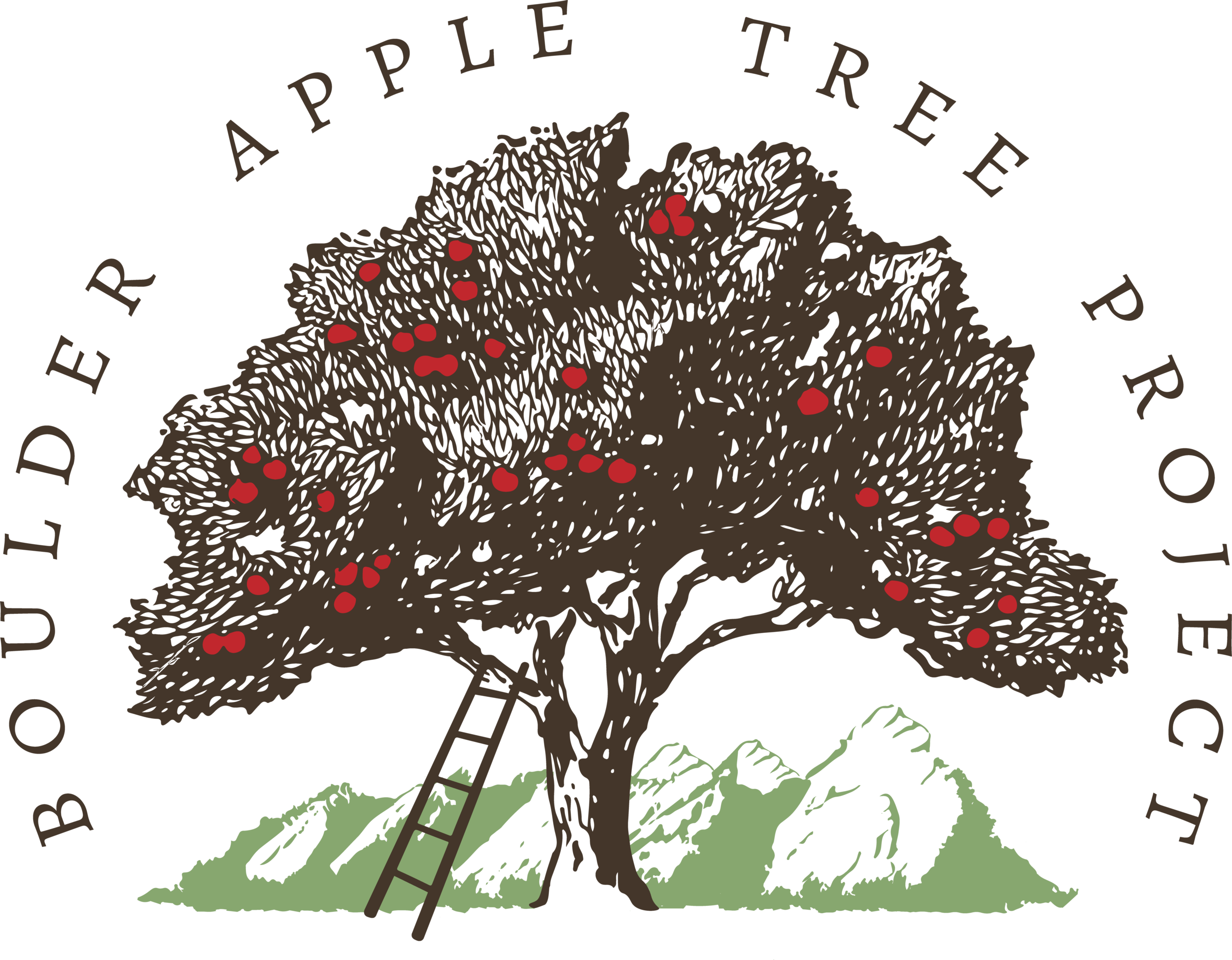Student Reflection from Sahara Becerra: Importance in Finding New Varieties
Apples collected from the Apple Blitz on September 25th, 2021
On September 25th I had the opportunity to be involved in the Apple Blitz as part of the Boulder Apple Tree Project with members of the Ecology and Evolutionary Biology Department as well as those in the community. I was able to be the student leader for our group which included, Professor Katie Suding, Sam Van Aken, Elizabeth Glass, and Megan Bowes. Our goal for the day was to make it out to 3 different sites, one in Marshall Mesa and two in Eldorado Springs to tag and measure trees. When we went out to the sites we measured height, drip line (one end of canopy to the other), fire blight presence, condition of the tree and fruit, as well as trunk diameter, all of which I learned in my EBIO 1250 lab. Throughout the four trees we ended up tagging, most of them had very sweet, crisp fruit that were good for baking and eating. We also noticed that those trees were very full of fruit, and it seemed that they were just a small part of so many more trees around the area. The impact of apple trees is important to the biodiversity within Boulder and the surrounding areas. In one article it explains the ecosystem services of apple trees and how they provide pollination due to bees as well as species richness (Samnegård et al., 2019). Along with the Boulder Apple Tree Project and being able to understand the varieties in and around Boulder, we found that the trees we went to had very red apples that had a streaking pattern on the outside, and discussing with the other members of the group it was very hard for them to identify, which is why this project is so important, because the wide variety that is seen just in someone’s backyard shows the possibilities that are out there.
The Apple Blitz is a big part of being able to understand the diversity among the area and providing that knowledge and outreach within the community about apple trees varieties that still can be discovered. It is taking something that many do not think about in their every day lives and allowing the community to question the possibilities of varieties not just in apple trees but in all species that have yet to be discovered and analyzed. For me, being a part of the Blitz allowed me to see how abundant apple trees were and helped me understand the bigger picture of the project by being able to go out and talk to community members to learn about the history of the area and the enthusiasm that team members had for finding new varieties and how they affect the ecosystem. As for our general overview of the day, it was at first hard to get into the rhythm of tagging and getting all the measurements done within the time given, but as members of the group understood how to collect the data it went more smoothly. We effectively tagged and measured four trees during the Apple Blitz to provide data that could possibly help identify more varieties. I believe if the word is spread more throughout different cities in the state, I think that it would open more opportunities for being able to tag more trees because more people would be willing to volunteer and thus more knowledgeable on the impact of finding new varieties that could benefit the community from an ecological standpoint.

